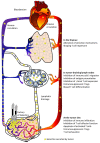Unraveling How Tumor-Derived Galectins Contribute to Anti-Cancer Immunity Failure
- PMID: 34572756
- PMCID: PMC8469970
- DOI: 10.3390/cancers13184529
Unraveling How Tumor-Derived Galectins Contribute to Anti-Cancer Immunity Failure
Abstract
Current data indicates that anti-tumor T cell-mediated immunity correlates with a better prognosis in cancer patients. However, it has widely been demonstrated that tumor cells negatively manage immune attack by activating several immune-suppressive mechanisms. It is, therefore, essential to fully understand how lymphocytes are activated in a tumor microenvironment and, above all, how to prevent these cells from becoming dysfunctional. Tumors produce galectins-1, -3, -7, -8, and -9 as one of the major molecular mechanisms to evade immune control of tumor development. These galectins impact different steps in the establishment of the anti-tumor immune responses. Here, we carry out a critical dissection on the mechanisms through which tumor-derived galectins can influence the production and the functionality of anti-tumor T lymphocytes. This knowledge may help us design more effective immunotherapies to treat human cancers.
Keywords: cancer immunotherapy; galectins; lymphocyte homeostasis; tumor immune evasion.
Conflict of interest statement
The authors have no financial conflict of interest.
Figures
Similar articles
-
Galectins and their ligands: negative regulators of anti-tumor immunity.Glycoconj J. 2012 Dec;29(8-9):619-25. doi: 10.1007/s10719-012-9379-0. Epub 2012 Apr 29. Glycoconj J. 2012. PMID: 22544342 Free PMC article. Review.
-
Future perspectives in melanoma research : Meeting report from the "Melanoma Bridge". Napoli, December 1st-4th 2015.J Transl Med. 2016 Nov 15;14(1):313. doi: 10.1186/s12967-016-1070-y. J Transl Med. 2016. PMID: 27846884 Free PMC article.
-
Targeting galectins in T cell-based immunotherapy within tumor microenvironment.Life Sci. 2021 Jul 15;277:119426. doi: 10.1016/j.lfs.2021.119426. Epub 2021 Mar 27. Life Sci. 2021. PMID: 33785342 Review.
-
Decoding Strategies to Evade Immunoregulators Galectin-1, -3, and -9 and Their Ligands as Novel Therapeutics in Cancer Immunotherapy.Int J Mol Sci. 2022 Dec 8;23(24):15554. doi: 10.3390/ijms232415554. Int J Mol Sci. 2022. PMID: 36555198 Free PMC article. Review.
-
Galectins: emerging regulatory checkpoints linking tumor immunity and angiogenesis.Curr Opin Immunol. 2017 Apr;45:8-15. doi: 10.1016/j.coi.2016.12.003. Epub 2017 Jan 11. Curr Opin Immunol. 2017. PMID: 28088061 Review.
Cited by
-
Galectin-8 Immunohistochemical Profile in Pancreatic Ductal Adenocarcinoma: Emerging Evidence for Its Prognostic Role.Diagnostics (Basel). 2023 Oct 15;13(20):3215. doi: 10.3390/diagnostics13203215. Diagnostics (Basel). 2023. PMID: 37892036 Free PMC article.
-
Galectin-1 in Pancreatic Ductal Adenocarcinoma: Bridging Tumor Biology, Immune Evasion, and Therapeutic Opportunities.Int J Mol Sci. 2023 Oct 24;24(21):15500. doi: 10.3390/ijms242115500. Int J Mol Sci. 2023. PMID: 37958483 Free PMC article. Review.
-
Inhibition of galectins in cancer: Biological challenges for their clinical application.Front Immunol. 2023 Jan 10;13:1104625. doi: 10.3389/fimmu.2022.1104625. eCollection 2022. Front Immunol. 2023. PMID: 36703969 Free PMC article. Review.
-
Investigation of LGALS2 expression in the TCGA database reveals its clinical relevance in breast cancer immunotherapy and drug resistance.Sci Rep. 2023 Oct 14;13(1):17445. doi: 10.1038/s41598-023-44777-1. Sci Rep. 2023. PMID: 37838802 Free PMC article.
-
Highlights on the Role of Galectin-3 in Colorectal Cancer and the Preventive/Therapeutic Potential of Food-Derived Inhibitors.Cancers (Basel). 2022 Dec 22;15(1):52. doi: 10.3390/cancers15010052. Cancers (Basel). 2022. PMID: 36612048 Free PMC article. Review.
References
-
- Laderach D.J., Compagno D., Toscano M.A., Croci D.O., Dergan-Dylon S., Salatino M., Rabinovich G.A. Dissecting the signal transduction pathways triggered by galectin-glycan interactions in physiological and pathological settings. IUBMB Life. 2010;62:1–13. - PubMed
Publication types
Grants and funding
LinkOut - more resources
Full Text Sources


